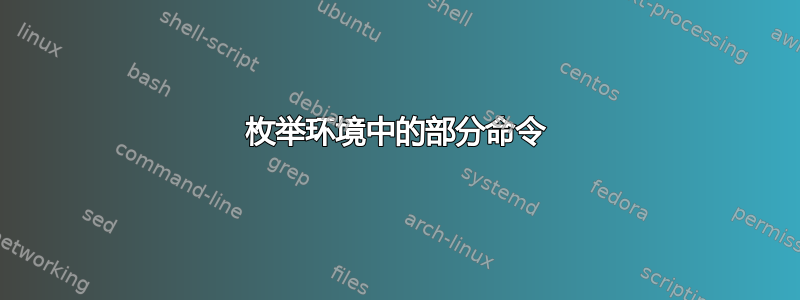
我想要在enumerate环境之前和环境内部都有子部分命令:
\subsection*{Instantaneous Velocity}
\begin{enumerate}
\item[\textsf{\textbf{Example 1}}] The table below gives the position $s$ of a car at time $t$.
\begin{enumerate}
\item Find the average velocity over the following intervals.
\begin{enumerate}
\item $0 \leq t \leq 0.4$
\end{enumerate}
\item Estimate the instantaneous velocity at $t=0.4$.
\end{enumerate}
\vfill
\subsection*{Defining Instantaneous Velocity Using the Idea of a Limit}
\item[\textsf{\textbf{Example 2}}] Yackety yack yack
\vfill
\end{enumerate}
当我编译它时,环境内的子部分enumerate会缩进(显然是为了与enumerate环境相匹配)但我希望它与enumerate环境外部的子部分对齐。
我知道\suspend \resume和\interitemtext,但想知道是否存在一些更简单(更简单)的解决方案,或者我可能遗漏了一个基本概念。
答案1
您可以使用该包找到一个简单的解决方案enumitem(无需手动对外部枚举进行编号)。这个想法只是在子节末尾关闭枚举环境,并resume*在下一节开始后使用选项打开另一个枚举环境:
\documentclass[12pt, a4paper]{article}
\usepackage[utf8]{inputenc}
\usepackage[T1]{fontenc}
\usepackage{lmodern}
\usepackage{enumitem}
\begin{document}
\subsection*{Instantaneous Velocity}
\begin{enumerate}[label =\textsf{\textbf{Example \arabic*. }}, wide,labelindent = 0pt]
\item The table below gives the position $s$ of a car at time $t$.
\begin{enumerate}
\item Find the average velocity over the following intervals.
\begin{enumerate}
\item $0 \leq t \leq 0.4$
\end{enumerate}
\item Estimate the instantaneous velocity at $t=0.4$.
\end{enumerate}
\end{enumerate}
\vfill
\subsection*{Defining Instantaneous Velocity Using the Idea of a Limit}
\begin{enumerate}[resume*]
\item Yackety yack yack
\end{enumerate}
\vfill
\end{document}



